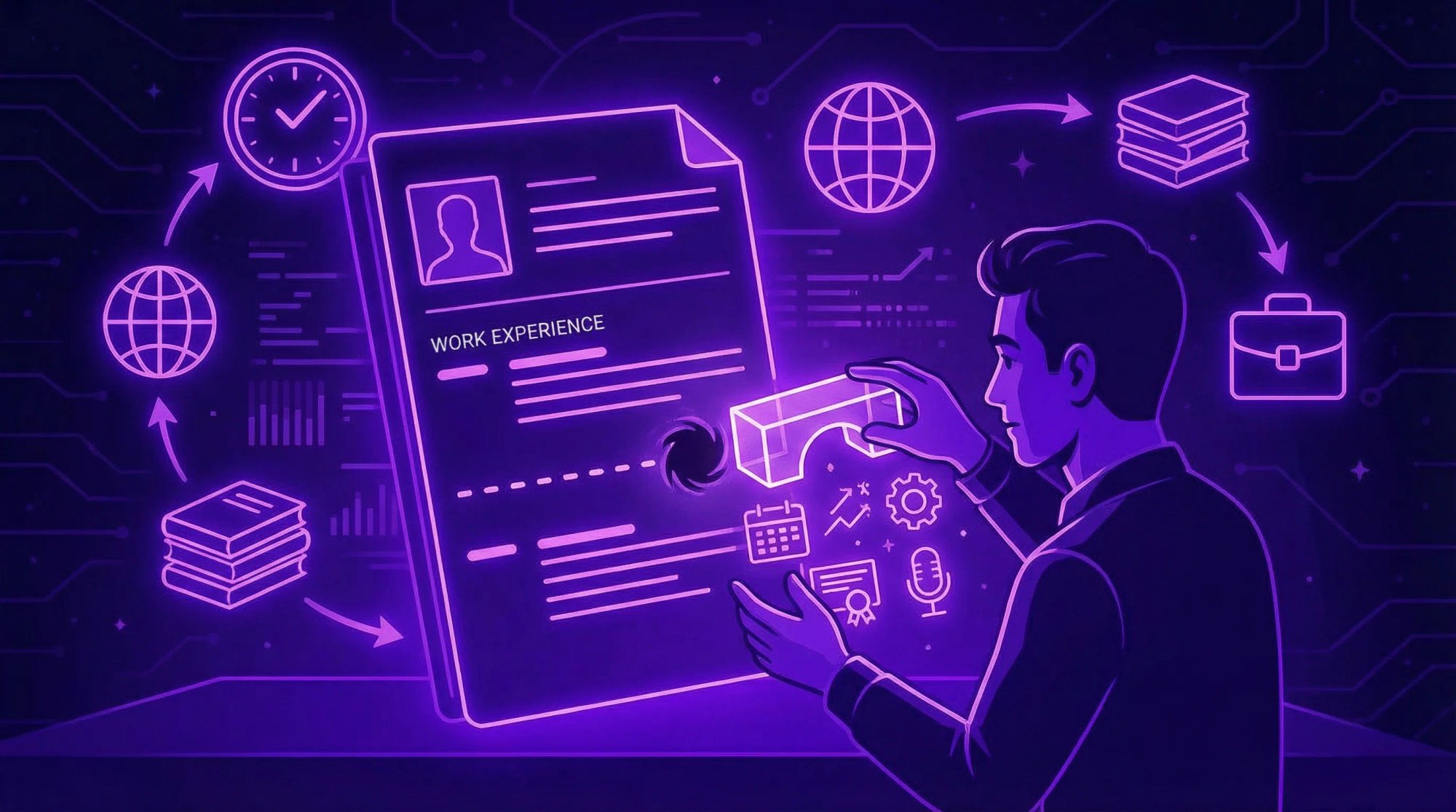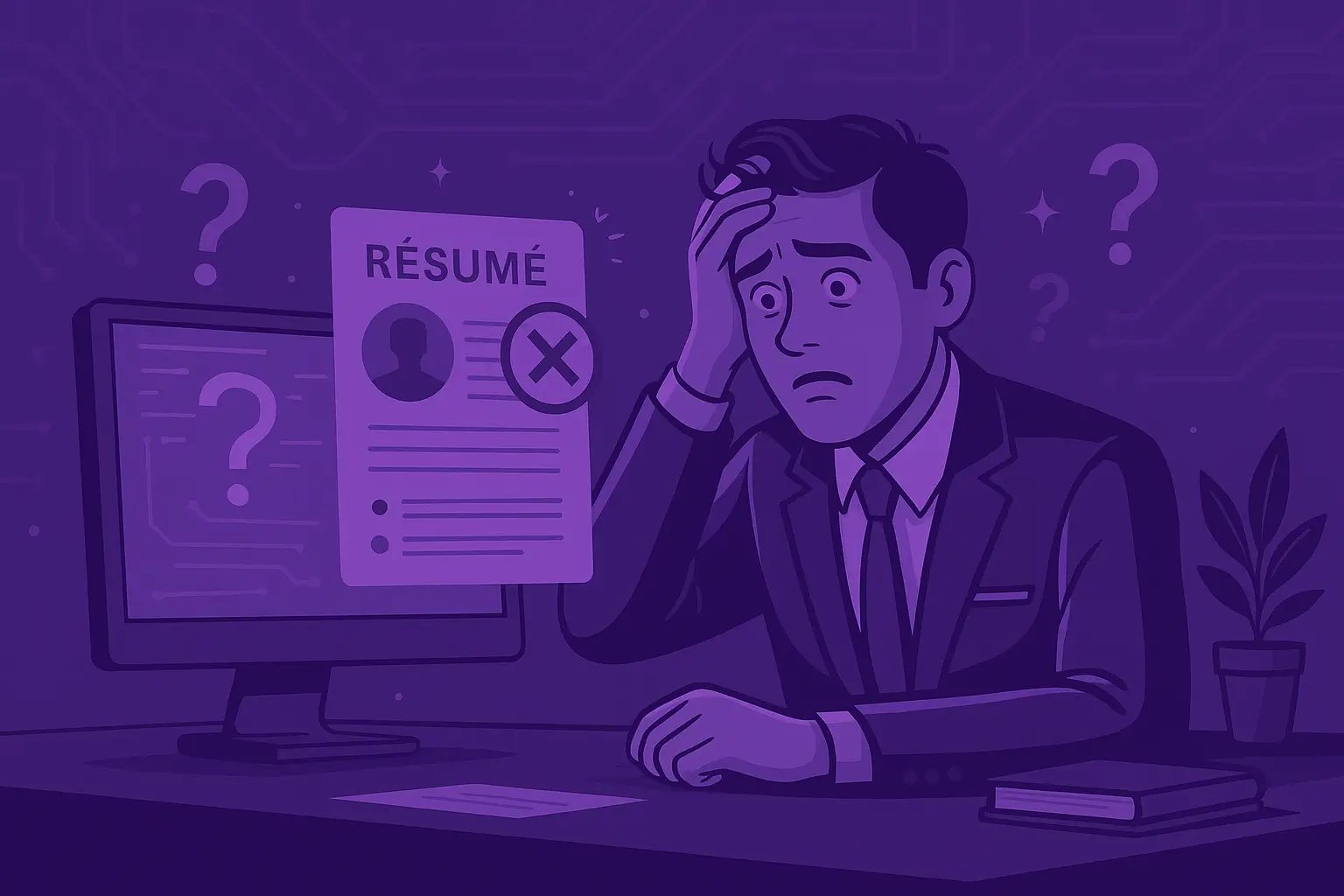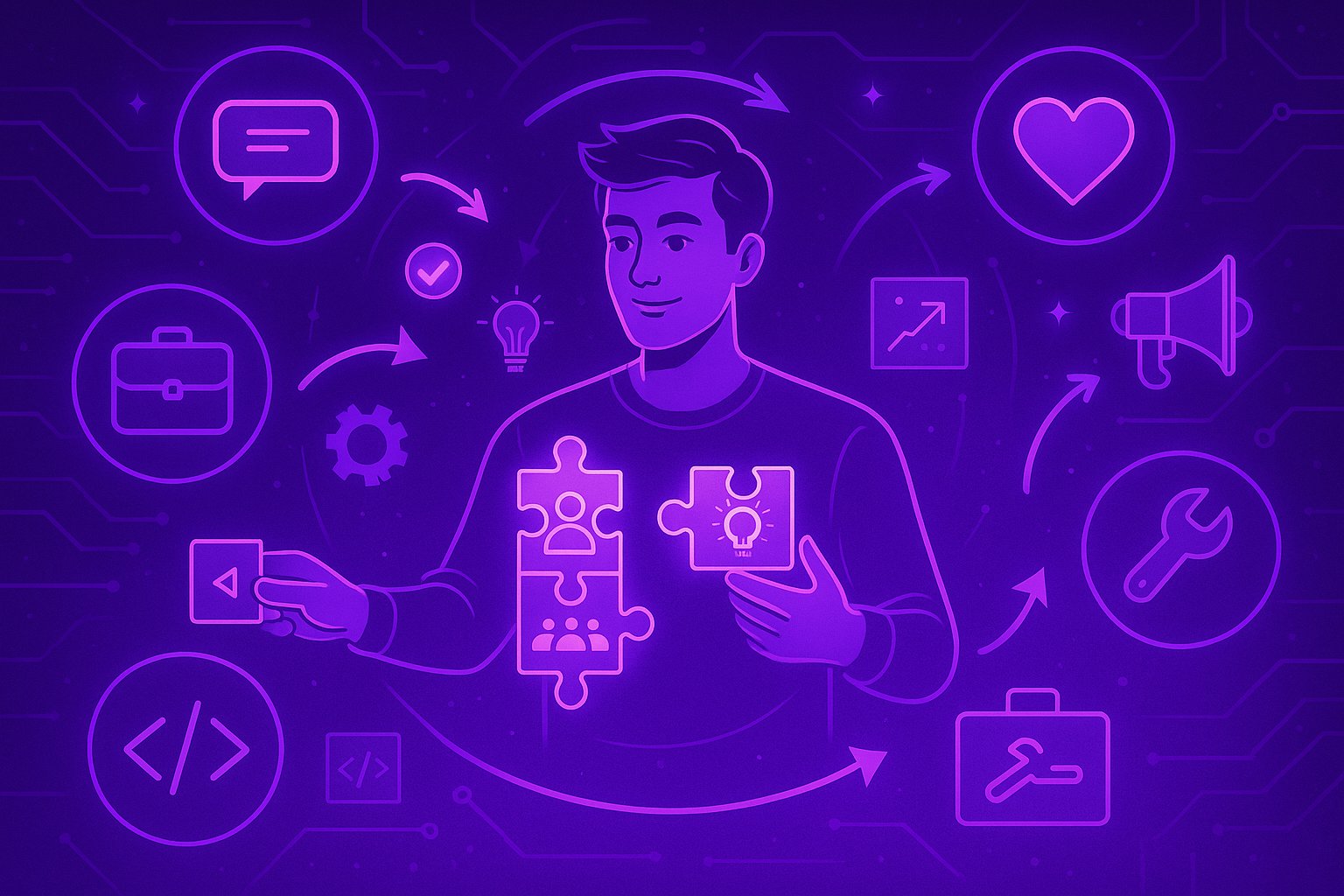How to Get Hired Fast: The 2025 Guide That Actually Works
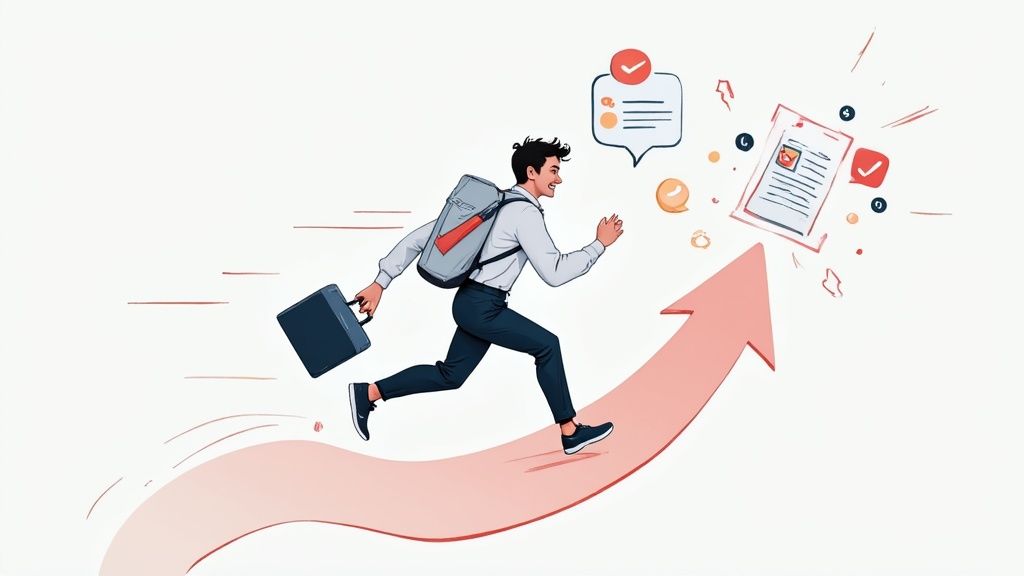
Job searching can feel impossibly slow. You send outapplication after application, wait weeks for responses, and watch perfect opportunities slip away while you’re stuck in lengthy hiring processes.
The average job search takes over 20 weeks (nearly 5 months), according to research data. Meanwhile, top candidates disappear from the market within just 10 days, as industry hiring reports show.
The gap between slow job searches and fast hires isn’t luck. It’s strategy.
In 2025, the job market rewards candidates whounderstand how to work smarter, not just harder. Whether you’re between jobs,looking to make a career change, or simply want to land something better, the tactics in this guide can compress months of searching into weeks of focus edaction.
You’ll discover proven methods that help job seekers bypass the usual bottle necks, from AI-powered application tools to networking strategies that unlock the hidden job market. By the end, you’ll have a clear roadmap to accelerate your path to that next offer.
Professional briefcase with rocket launching out symbolizing fast job search acceleration and strategic career success.
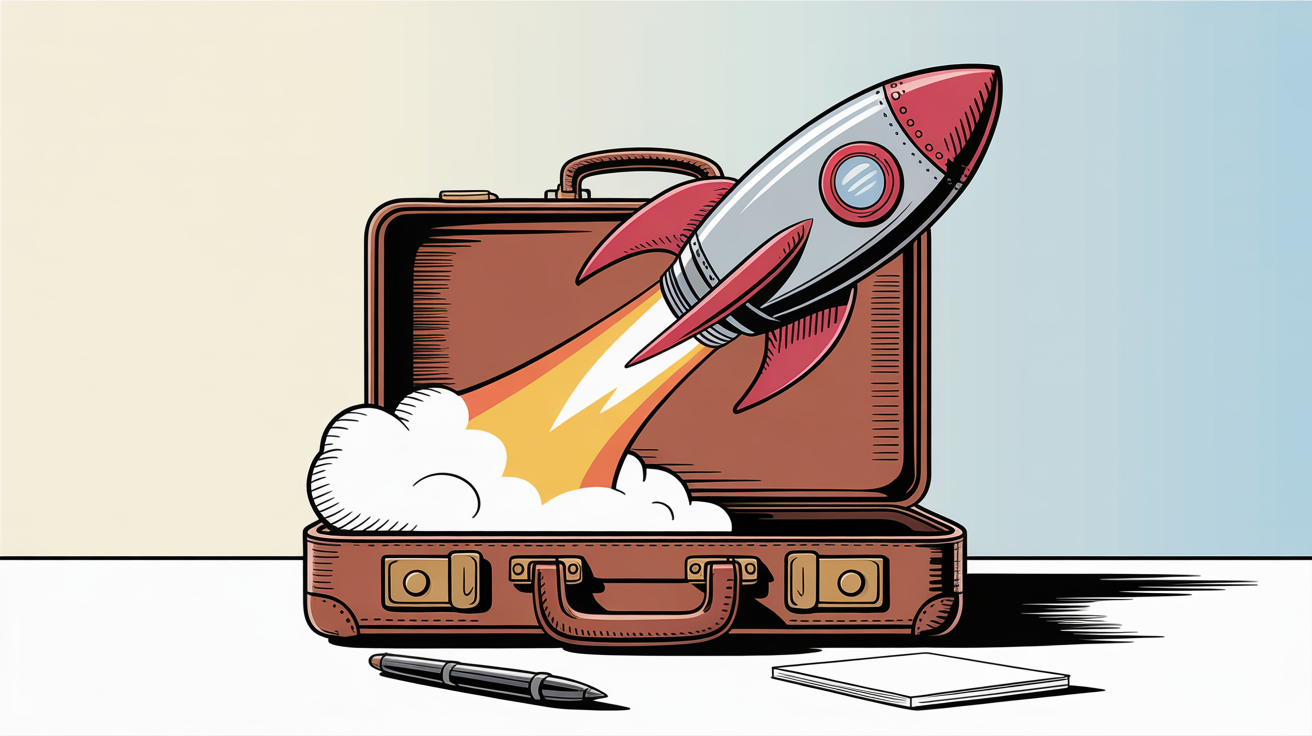
How to Stop Sending Generic Job Applications (What Actually Works in 2025)
The biggest time-waster in job searching?
Sending the same resume and cover letter to every job posting.
Most people do this because customizing applications feels overwhelming. But generic applications have terrible success rates, and you’ll waste months waiting for responses that never come.
The solution is targeted customization (and it’s easier than you think).
Bullseye target with arrows hitting center representing strategic targeted job applications versus scattered generic approach.
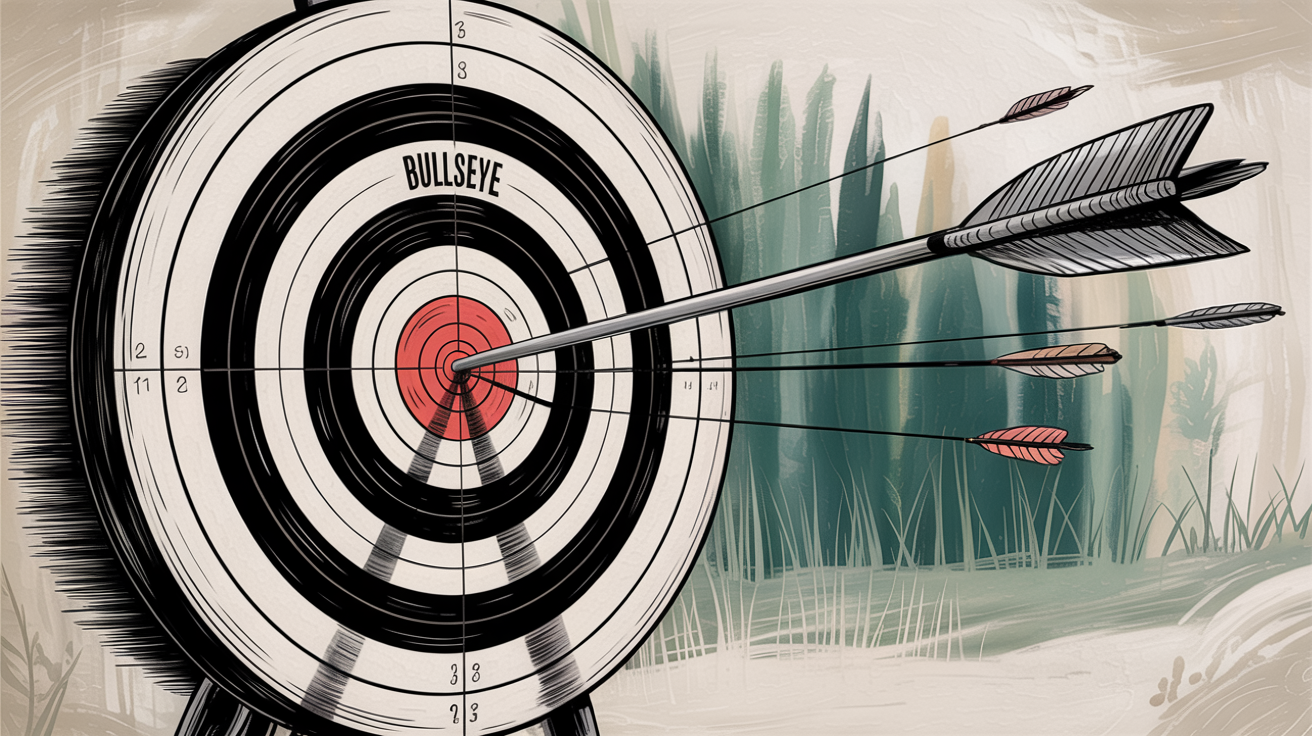
Why Customized Job Applications Get Better Results
Modern companiesuse Applicant Tracking Systems (ATS) to filter applications. These systems scanfor keywords that match the job description. When your resume echoes the language in the posting, you vaulttailoringyour resume to job descriptions past these filters, according to research on getting hired effectively.
Even more importantly, recruiters spend just 7 seconds initially scanning each resume, as our job search research reveals. Those 7 seconds determine whether you get a closer look or get tossed aside.
How to Customize Your Resume forEach Job
Here’s how tocustomize efficiently:
→ Target theright keywords
Pull 5-8 key skills and qualifications directly from the job posting. Make sure these appear naturally through out your resume, especially in your summary and relevant experience sections. Learn more about tailoring your resume to job descriptions.
→ Craft a compelling summary
Your resume summary should immediately communicate your value. Instead of generic statements, write 2-3 sentences that connect your background to their specific needs. Check out good resume title examples for inspiration.
→ Write targeted cover letters
A personalized cover letter can fast-track you to the interview pile. In 2-3 short paragraphs, explain why you want this specific role at this specific company and how you’ll solve their problems. See our cover letter format examples for guidance.
How AI Tools Speed Up Job Applications
If customizing every application sounds time-consuming, AI tools can accelerate the process dramatically.
Our AI Resume Builder and Cover Letter Generator can customize your documents for each job posting in minutes instead of hours. The system analyzes job descriptions and suggests keyword-optimized content that feels natural and authentic.
Critical insight: Our users are 80% more likely to get hired compared to traditional job seekers, largely because AI customization helps them get past filters and impress hiring managers faster.
The key principle: every application should feel bespoke to that employer. A few extra minutes on customization can save you weeks by generating faster interview requests.
How to Build an Online Presence That Gets You Hired
In a fast job search, opportunities should come to you along side the ones you pursue.
Over 70% of employers screen social media profiles before making hiring decisions, according to hiring statistics.
This means your online presence is either helping or hurting your chances with every application.
Laptop showing “CONNECT” with network visualization representing professional digital presence and online networking opportunities.

How to Optimize Your LinkedIn Profile to Get Hired?
Your LinkedIn profile is your always-on job interview. Optimize it this way:
① Get strategic recommendations
Ask former colleagues and managers for LinkedIn recommendations. These add credibility and often prompt viewers to dig deeper into your profile.
Professional magnifying glass highlighting business professionals representing recruiters discovering optimized LinkedIn profiles.
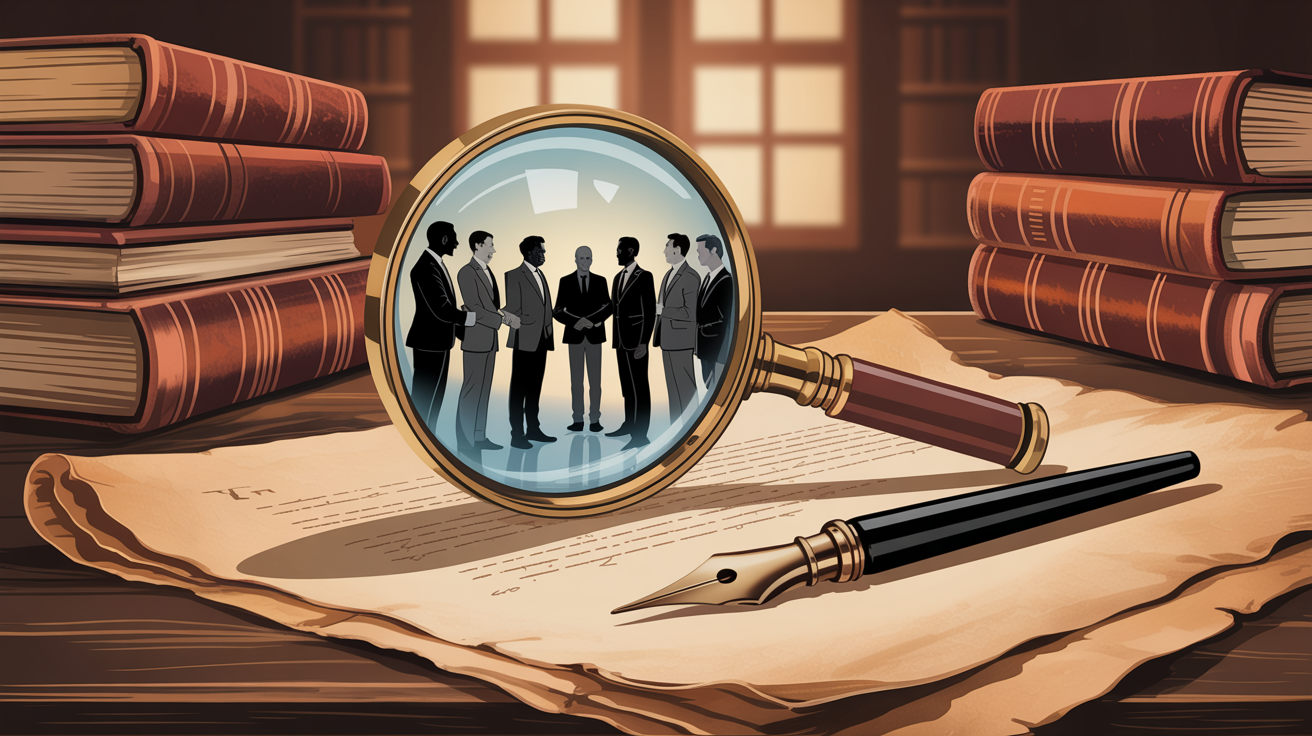
② Engage professionally
Comment thoughtfully on industry posts, share relevant articles, and participate inprofessional groups. This visibility can attract recruiters who are actively looking for candidates. Learn more about whether LinkedIn is worth it for your career.
How to Create an Online Portfolio That Impresses Employers
Depending on your field, showcase your work online:
• Developers: Maintain an active GitHub profile with clean, documented code
• Designers: Keep an updated portfolio website with recent projects (check our personal website guide)
• Marketers: Write case studies about successful campaigns you’ve managed
• Writers: Maintain a blog or contribute to industry publications
These work samples let employers see your capabilities immediately, which can lead to faster hiring decisions.
Pro tip: Link all your online profiles together. Your LinkedIn should point to your portfolio, your resume should include your LinkedIn, and everything should tell a consistent professional story.
How to Apply to Jobs First (Before Other Candidates)
Being among the first applicants for a new job posting gives you a significant advantage.
Many employers review resumes on a rolling basis and start interviewing before the official application deadline. This means the perfect candidate they find early might get the job before they even see your late application.
Professional businessman receiving morning job alert notification at 8:00 AM representing strategic timing in job applications.

How to Set Up Job Alerts to Apply First
Job alerts areyour secret weapon. Set them up on:
→ LinkedIn for professional and white-collar roles
→ Indeed for broad industry coverage
→ Glassdoor includes company insights with job listings
→ Industry-specificboards (Dice for tech, university boards for academia)
Configure alerts to notify you immediately when jobs matching your criteria appear. For example,if you’re a Python developer in Seattle, set alerts for “Python developer +Seattle” so you’re among the first to know about new openings.
How Job Application Automation Saves Time
To truly accelerate your application process, consider leveraging automation tools.
Our Auto Apply feature scans over a million job postings and can submit hundreds of tailored applications per monthon your behalf. It’s like having a tireless assistant who never misses a new posting and customizes each application automatically.
Think about the math: If you manually apply to 5 jobs per day, that’s 150 applications per month. Auto Apply can handle that volume in a few days while you focus on networking and interview preparation.
Learn more about automating job applications.
How to Apply to More Jobs Without Losing Quality
Remember this critical balance: volume and relevance both matter.
Even with automation tools, ensure each application is accurate and appropriately targeted. A few well-targeted applications often out perform dozens of generic ones. Our job application bot guide explains the perfect balance.
Quick application checklist:
✓ Resume matches job requirements?
✓ Cover letter mentions the company name?
✓ Contact information current?
✓ Documents error-free?
The combination of speed and precision is what gets you hired fastest.
How to Find Hidden Jobs Through Networking (85% of Jobs Aren’t Posted)
Most job seekers compete for the same publicly posted positions. But here’s what they don’t know: an estimated 85% of jobs are filled through networking, and around 70% of openings are never posted publicly, according to networking research.
These hidden opportunities can fast-track your hiring process because you often connect directly with hiring managers, by passing crowded application pools entirely.
3 Steps to Network Your Way to Hidden Jobs
① Tell your existing network
Don’t be subtle about your job search. Let friends, former colleagues, mentors, and family know you’re looking and be specific about the roles you want. Often opportunities arise simply because you were top of mind when someone heard of an opening.
② Attend industry events
Whether virtualor in-person, professional meetups and conferences help you build relationships that can lead to referrals. Focus on adding value in conversations rather than immediately asking for job leads.
③ LinkedIn networking strategy
Identify employees at companies you want to work for and politely request brief informational chats. Many people are willing to share insights about their company culture and open positions. Learn how to send a message to a hiring manager effectively.
Remember: Personal connections can catapult you ahead in the hiring queue. Hiring managers trust candidates who come recommended by someone they know.
Why Employee Referrals Get You Hired 6x Faster
Even one or two well-placed conversations can break open your search overnight. A hiring manager impressed by a colleague’s recommendation might fast-track you to aninterview while other candidates wait in the general application pool.
How to Use Job Fairs to Get Hired Faster
Sometimes the fastest path to getting hired is meeting employers face-to-face.
Job fairs and hiring events let you bypass crowded online applications and make personal impressions. As career experts note, interacting with employers in less formal settings can “help speed the process along” because they see your personality alongside your qualifications.
Professional job seekers meeting employers at career fair booths with hand shakes and networking conversations.

How to Succeed at Job Fairs and Hiring Events
Come prepared for success:
• Bring multiple copies of your resume (tailored for the types of roles you’ll discuss). Use effective resume formats
• Dress professionally (as you would for an interview)
• Prepare a 30-second elevator pitch about your background and goals. Check our interview elevator pitch examples
• Research participating companies before hand. Learn how to research companies
Be proactive and memorable. Approach company booths confidently, ask thoughtful questions about the role and company culture, and express genuine enthusiasm. This personal touch can lead to immediate follow-up opportunities.
Some companies even conduct on-the-spot interviews for promising candidates they meet at job fairs.
Why Job Fairs Are Faster Than Online Applications
Job fairs compress weeks of hiring process into a single day.
Instead of submitting resumes into online voids, you’re shaking hands (or video chatting) with actual decision-makers. Even if you don’t get hired that day, you often leave with direct contact information, moving you ahead of candidates still waiting for email responses.
Traditional applications: Submit resume online → Wait weeks for responses → Compete with hundreds → Generic screening
Job fair connections: Meet hiring managers directly → Get feedback immediately →Stand out through personal interaction → Personalized conversations
How to Work With Recruiters to Find Jobs Faster
Professional recruiters can be powerful accelerators in a fast job search.
Their job is connecting candidates with openings, and they often have access topositions that haven’t been widely advertised yet. Working with the right recruiter can effectively outsource part of your search effort.
Professional magnifying glass examining resume documents representing recruiter search and candidate matching services.

3 Ways Recruiters Can Fast-Track Your Job Search
→ Instant job matching
Good recruiters maintain databases of both candidates and open positions. When you share your skills and preferences, they can quickly identify suitable roles you might have missed. It’s common to have interviews arranged within days through recruiter connections.
→ Insider guidance
Recruiters coach you on what specific employers are seeking, help refine your resume, and provide interview preparation because their success depends on your success.They also handle scheduling and logistics, freeing you to focus on preparation.
→ Multiple opportunities
Once a recruiter knows and believes in you, they might present you for several openings simultaneously, dramatically accelerating how many processes you can enter atonce.
What to Know Before Working With Recruiters
Legitimate recruiters never charge job seekers fees. They’re paid by hiring companies, not by candidates, according to career guidanceon working with recruiters.
Connect with multiple recruiters, especially those specializing in different industries or company types. This expands your network and increases your chances of hearing about the right opportunity quickly.
How Internal Job Transfers Can Be Your Fastest Path
If you’re currently employed, internal transfers or promotions might be your fastest path to a new role. Companies often prefer internal candidates because you already understand the culture and systems.
Internal hiring processes skip many steps since there’s no lengthy onboarding period. You might move into a new role with just a manager interview and approval.
How to Focus Your Job Search for Maximum Results
When you’re eager to get hired, it’s tempting to apply everywhere and hope something sticks.
But this scattered approach often backfires. Generic applications have low success rates, and pursuing roles far outside your qualifications wastes time you could spend on winnable opportunities.
The smarter strategy: target roles where you’re a strong match, but cast a widenet within that zone.
Professional bullseye target with arrow hitting center representing strategic job search focus and precision targeting.

How to Find Jobs Where You’re Most Competitive
① Identify 2-3 job titles where your background makes you competitive. For example, if you’re a digital marketer, you might target “SEO Specialist,” “Content Marketing Manager,” and “Social Media Strategist” roles.
② Consider adjacent opportunities where your skills transfer naturally. This expands your options without diluting your focus. Our best jobs for career change guide can help identify transferable roles.
③ Apply broadly within your target zone. If you find 20 jobs that fit your criteria, apply to all 20 (with each one tailored, of course). Being prolific in the right category increases your odds of multiple interviews.
As career research shows, “when you take the time to find the top jobs that most closely match your qualifications, you are more likely to see results and avoid wasting time.”
How to Track Your Job Applications Effectively
Best practices
The formula for fast results: High volume + High relevance = Higher conversion rates and faster offers.
How to Nail Job Interviews and Get Offers Faster
Getting interviews quickly means nothing if you can’t convert them into offers.
The job offer won’t come unless you nail the interview stage. The sooner you prove you’re the right hire, the sooner employers stop interviewing other candidates and extend you an offer.
Professional conference room with executive chairs and meeting table for job interview preparation.

3-Step System to Nail Every Job Interview
Research thoroughly
For every interview, know the company’s products, recent news, and specific job requirements. Prepare concrete examples from your experience that demonstrate each key skill they’re seeking.
Practice with purpose
Rehearse your responses, ideally with a friend or using mock interview tools. Our Mock Interview Simulator and Interview Buddy can help you refine answers and build confidence through realistic practice scenarios.
Make strong first impressions
Dress appropriately, arrive on time, and project enthusiasm from the start. First-choice candidates usually get hired first, so establish yourself as a top pick immediately. Learn about body language for interviews and how to be confident in an interview.
How to Show Employers Your Value in Interviews
Connect your experience to their needs. Use the interview to explicitly link your background to the role’s challenges.
For example: “You mentioned needing to improve customer retention. In my last role, I led aproject that boosted retention 15% by implementing a new onboarding program. I’d love to bring a similar approach here.”
Quantify your impact whenever possible. Employers move faster on candidates they believe will add measurable value from day one. Our guide on professional achievements examples shows how to present your wins effectively.
How to Follow Up After Interviews for Faster Offers
Always send a thank-you email within 24 hours.
This reinforces your interest and keeps you fresh in their minds. Mention something specificfrom your conversation to show you were engaged. Check our best follow-upemail after interview templates.
According to career research, prompt follow-ups demonstrate professionalism and can encourage quicker hiring decisions. Learn more interview follow-up tips.
How Contract Jobs Can Lead to Full-Time Employment
Sometimes the fastest route to getting hired involves expanding your definition of employment.
Temporary,contract, or part-time positions often have streamlined hiring processes because companies need to fill urgent needs quickly. These roles can serveas stepping stones to the permanent position you ultimately want.
Stepping stones pathway through forest representing contract work progression to full time employment.

3 Reasons Contract Jobs Lead toFull-Time Offers
→ Quick entry points
Companies often bring on temporary staff with minimal hiring steps. You might be working within days if you have the skills they need immediately.
→ Prove your value
Temporary assignments let employers “try before they buy.” If you impress them, many will create permanent positions or extend your contract. Research shows that companies frequently use temporary assignments to vet candidates before making full-time offers.
→ Maintain momentum
It’s easier to conduct a job search when you’re employed. Your skills stay sharp, your resume has no gaps, and employers often find working candidates more attractive. Learn about what is a contractor job and how it fits your career strategy.
How to Use Contract Work as a Stepping Stone
Let’s say you want a full-time marketing role. You might take a part-time social media consulting gig that you can land within a week, then continue pursuing your ideal positions from a position of strength.
Don’t overlook:
• Freelance projects in your field
• Consulting opportunities
• Internships (if you’re changing careers). See our cover letter for internships examples
• Volunteer work that builds relevant experience
The two-steps trategy: Get in fast through alternative employment, then transition to your long-term goal from inside the industry.
How to Stay Ready for New Job Opportunities
The final piece of getting hired fast is maintaining constant readiness.
The 2025 job market moves quickly. New technologies, skills, and opportunities emerge rapidly. When you’re actively upskilling and staying prepared, you can jump on opportunities immediately.
Stack of learning books with growing plant symbolizing continuous skill development and professional growth.

How to Learn New Skills That Get You Hired Faster
Identify in-demand skills you’re currently missing and tackle the most achievable one first. Online learning platforms let you gain new certifications in weeks or even days.
For example: If many job listings mention a specific software you don’t know, complete a crash course on it. This immediately expands the roles you qualify for and signals to employers that you’re proactive and adaptable.
Companies are increasingly focusing on skills-based hiring over traditional qualifications, as our research on modern job search techniques shows. Demonstrating relevant skills can make employers willing to hire you faster, even if you’re not the “perfect” candidate on paper.
How to Stay Organized During YourJob Search
Keep your job search systems updated:
① Track applications and their status (use our job search strategy guide)
② Maintain current references (learn how to ask someone to be a reference)
③ Keep interview prep materials ready (check our job interview cheat sheet)
④ Respond promptly to employer outreach
Being available and enthusiastic can tip the scales in your favor when employers are choosing between similarly qualified candidates.
How to Follow Up on Job Applications Without Being Annoying
Don’t be afraid to follow up on applications or interviews professionally. A polite email expressing continued interest can sometimes prompt action from busy hiring managers.
Timing matters: Follow up one week after interviews, then again a week later if you haven’t heard back. Professional persistence shows you’re serious without being pushy. Check our application follow-up email examples.
Every interaction is an opportunity to keep momentum moving toward an offer.
Getting Hired Fast: Frequently Asked Questions
How long should I expect my job search to take in 2025?
The average job search takes over 20 weeks, but using the strategies in this guide can compress that timeline significantly. Candidates who leverage AI tools, networking, and strategic applications often see results within 4-8 weeks. The key is working smarter, not just sending more applications.
What if I don’t have much experience or I’m changing careers?
Focus on transferable skills and be open to entry-level positions in your target field. Consider temporary or contract work to gain experience quickly. Highlight any relevant projects, volunteer work, or self-directed learning. Many employers value enthusiasm and potential over perfect experience matches. Check our career change at 40 and career change resume template guides.
Should I really apply to jobs where I don’t meet 100% of the requirements?
Absolutely. Most job descriptions are “wish lists” rather than strict requirements. If you meet 60-70% of the qualifications and can demonstrate relevant skills or strong learning ability, apply. Many successful hires don’t check every box but bring other valuable qualities.
How do I know if a job search tool or service is worth the investment?
Look for concrete success metrics and user testimonials. For example, we report that our users are 80% more likely to get hired, with over 800,000 job seekers using our platform. Free trials or money-back guarantees also reduce risk. Calculate the potential time savings against the cost.
What’s the biggest mistake people make when trying to get hired fast?
Sacrificing quality for quantity. Sending hundreds of generic applications is less effective than sending dozens of well-targeted, customized applications. Also, many people focus only on applying online and miss networking opportunities that could accelerate their search.
How can I stand out in acompetitive job market?
Be specific about your achievements (use numbers and concrete examples), customize every application, and leverage personal connections. Having a strong online presence and being responsive to opportunities also helps. Consider working with recruiters who can advocate for you directly.
Is it worth paying for premium job board features or career services?
It depends on your budget and timeline. Premium features like InMail on LinkedIn or priority placement on job boards can accelerate visibility. However, many effective strategies (networking, customizing applications, following up professionally)are free. Invest where you’ll get the highest return.
How do I balance my current job while searching for a new one?
Set specific times for job search activities (early morning, lunch breaks, evenings) and be efficient with your time. Use tools that automate parts of the process,like job alerts or application tracking. Be discreet about your search and never use company resources for job hunting.
What should I do if I’m not getting any interview responses?
Review your resume and cover letters for ATS optimization and ensure they’re tailored toeach position. Consider having a professional review your materials. Expand your search criteria or consider roles slightly below your target level to gain momentum. Sometimes the issue is market timing rather than your qualifications. Our what is an ATS and how to beat it guide explains optimization strategies.
How important is salary negotiation when I’m trying to get hired quickly?
Don’t skip negotiation entirely, but be strategic about timing. Focus first on getting offers, then negotiate from a position of strength. If you have multiple opportunities, you can use them as leverage. Research market rates before hand so you can negotiate quickly when the time comes. Check our entry level salary negotiation guide for tips.
Your Action Plan to Get Hired Fast
Getting hired fast isn’t about cutting corners or settling for less than you deserve. It’s about working strategically and leveraging every available advantage.
The strategies in this guide work because they address the real bottle necks in modern job searching: getting past applicant tracking systems, connecting with the right people, and standing out in crowded candidate pools.
Rocket launching into success with banner representing career acceleration and job search achievement.
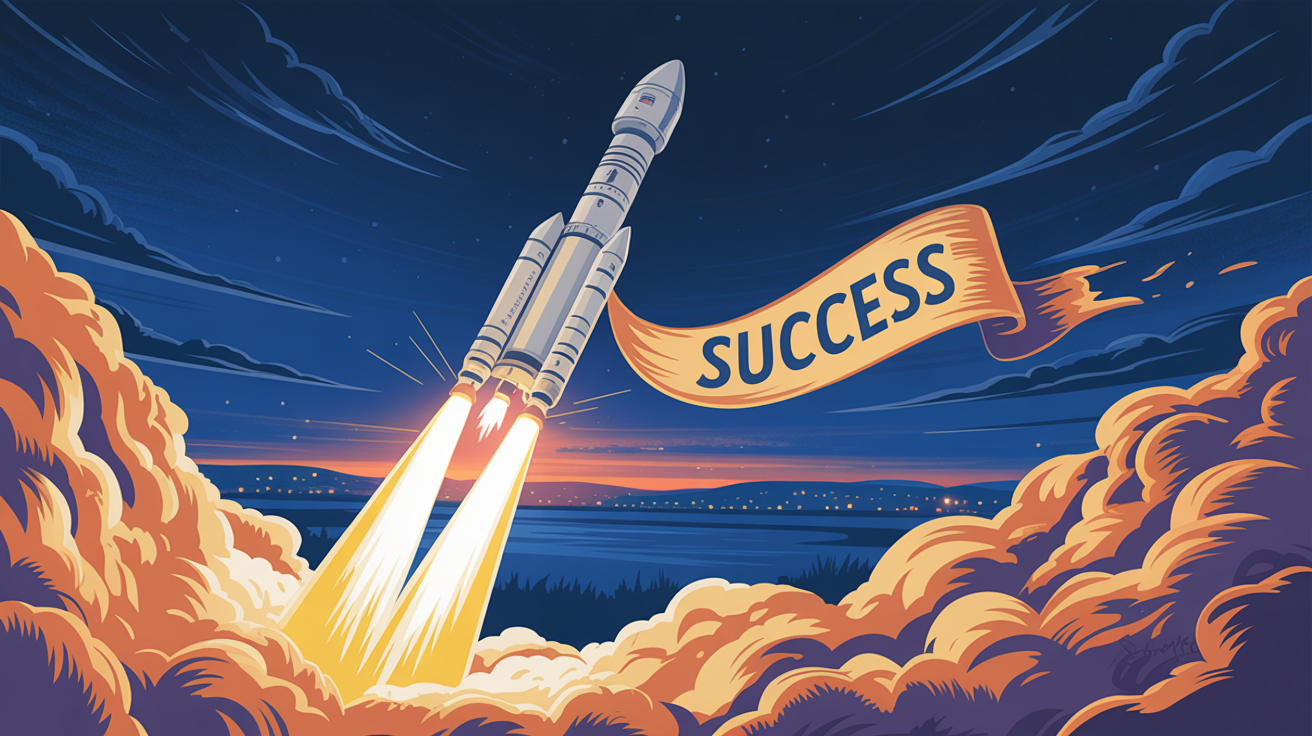
Technology can be your greatest ally in this process. Our comprehensive platform streamlines everything from resume customization to interview preparation, helping users achieve that 80% higher hiring rate through smart automation and AI-powered optimization.
But remember, tools are only as effective as the strategy behind them. Combine smart technology with networking, targeted applications, and thorough preparation, and you’ll be positioned for rapid success.
Your next chapter starts with your next action. Choose one strategy from this guide and implement it today. Whether it’s setting up job alerts, optimizing your LinkedIn profile, or reaching out to a former colleague, momentum builds on itself.
The job market rewards candidates who act strategically and move quickly. With over 800,000 job seekers already using these proven approaches, you have everything you need to accelerate your path to “You’re hired!”
Ready to supercharge your job search? Start with the fundamentals: customize every application, leverage your network, and stay consistently active in your search efforts.
Success is closer than you think.
Job searching can feel impossibly slow. You send outapplication after application, wait weeks for responses, and watch perfect opportunities slip away while you’re stuck in lengthy hiring processes.
The average job search takes over 20 weeks (nearly 5 months), according to research data. Meanwhile, top candidates disappear from the market within just 10 days, as industry hiring reports show.
The gap between slow job searches and fast hires isn’t luck. It’s strategy.
In 2025, the job market rewards candidates whounderstand how to work smarter, not just harder. Whether you’re between jobs,looking to make a career change, or simply want to land something better, the tactics in this guide can compress months of searching into weeks of focus edaction.
You’ll discover proven methods that help job seekers bypass the usual bottle necks, from AI-powered application tools to networking strategies that unlock the hidden job market. By the end, you’ll have a clear roadmap to accelerate your path to that next offer.
Professional briefcase with rocket launching out symbolizing fast job search acceleration and strategic career success.

How to Stop Sending Generic Job Applications (What Actually Works in 2025)
The biggest time-waster in job searching?
Sending the same resume and cover letter to every job posting.
Most people do this because customizing applications feels overwhelming. But generic applications have terrible success rates, and you’ll waste months waiting for responses that never come.
The solution is targeted customization (and it’s easier than you think).
Bullseye target with arrows hitting center representing strategic targeted job applications versus scattered generic approach.

Why Customized Job Applications Get Better Results
Modern companiesuse Applicant Tracking Systems (ATS) to filter applications. These systems scanfor keywords that match the job description. When your resume echoes the language in the posting, you vaulttailoringyour resume to job descriptions past these filters, according to research on getting hired effectively.
Even more importantly, recruiters spend just 7 seconds initially scanning each resume, as our job search research reveals. Those 7 seconds determine whether you get a closer look or get tossed aside.
How to Customize Your Resume forEach Job
Here’s how tocustomize efficiently:
→ Target theright keywords
Pull 5-8 key skills and qualifications directly from the job posting. Make sure these appear naturally through out your resume, especially in your summary and relevant experience sections. Learn more about tailoring your resume to job descriptions.
→ Craft a compelling summary
Your resume summary should immediately communicate your value. Instead of generic statements, write 2-3 sentences that connect your background to their specific needs. Check out good resume title examples for inspiration.
→ Write targeted cover letters
A personalized cover letter can fast-track you to the interview pile. In 2-3 short paragraphs, explain why you want this specific role at this specific company and how you’ll solve their problems. See our cover letter format examples for guidance.
How AI Tools Speed Up Job Applications
If customizing every application sounds time-consuming, AI tools can accelerate the process dramatically.
Our AI Resume Builder and Cover Letter Generator can customize your documents for each job posting in minutes instead of hours. The system analyzes job descriptions and suggests keyword-optimized content that feels natural and authentic.
Critical insight: Our users are 80% more likely to get hired compared to traditional job seekers, largely because AI customization helps them get past filters and impress hiring managers faster.
The key principle: every application should feel bespoke to that employer. A few extra minutes on customization can save you weeks by generating faster interview requests.
How to Build an Online Presence That Gets You Hired
In a fast job search, opportunities should come to you along side the ones you pursue.
Over 70% of employers screen social media profiles before making hiring decisions, according to hiring statistics.
This means your online presence is either helping or hurting your chances with every application.
Laptop showing “CONNECT” with network visualization representing professional digital presence and online networking opportunities.

How to Optimize Your LinkedIn Profile to Get Hired?
Your LinkedIn profile is your always-on job interview. Optimize it this way:
① Get strategic recommendations
Ask former colleagues and managers for LinkedIn recommendations. These add credibility and often prompt viewers to dig deeper into your profile.
Professional magnifying glass highlighting business professionals representing recruiters discovering optimized LinkedIn profiles.

② Engage professionally
Comment thoughtfully on industry posts, share relevant articles, and participate inprofessional groups. This visibility can attract recruiters who are actively looking for candidates. Learn more about whether LinkedIn is worth it for your career.
How to Create an Online Portfolio That Impresses Employers
Depending on your field, showcase your work online:
• Developers: Maintain an active GitHub profile with clean, documented code
• Designers: Keep an updated portfolio website with recent projects (check our personal website guide)
• Marketers: Write case studies about successful campaigns you’ve managed
• Writers: Maintain a blog or contribute to industry publications
These work samples let employers see your capabilities immediately, which can lead to faster hiring decisions.
Pro tip: Link all your online profiles together. Your LinkedIn should point to your portfolio, your resume should include your LinkedIn, and everything should tell a consistent professional story.
How to Apply to Jobs First (Before Other Candidates)
Being among the first applicants for a new job posting gives you a significant advantage.
Many employers review resumes on a rolling basis and start interviewing before the official application deadline. This means the perfect candidate they find early might get the job before they even see your late application.
Professional businessman receiving morning job alert notification at 8:00 AM representing strategic timing in job applications.

How to Set Up Job Alerts to Apply First
Job alerts areyour secret weapon. Set them up on:
→ LinkedIn for professional and white-collar roles
→ Indeed for broad industry coverage
→ Glassdoor includes company insights with job listings
→ Industry-specificboards (Dice for tech, university boards for academia)
Configure alerts to notify you immediately when jobs matching your criteria appear. For example,if you’re a Python developer in Seattle, set alerts for “Python developer +Seattle” so you’re among the first to know about new openings.
How Job Application Automation Saves Time
To truly accelerate your application process, consider leveraging automation tools.
Our Auto Apply feature scans over a million job postings and can submit hundreds of tailored applications per monthon your behalf. It’s like having a tireless assistant who never misses a new posting and customizes each application automatically.
Think about the math: If you manually apply to 5 jobs per day, that’s 150 applications per month. Auto Apply can handle that volume in a few days while you focus on networking and interview preparation.
Learn more about automating job applications.
How to Apply to More Jobs Without Losing Quality
Remember this critical balance: volume and relevance both matter.
Even with automation tools, ensure each application is accurate and appropriately targeted. A few well-targeted applications often out perform dozens of generic ones. Our job application bot guide explains the perfect balance.
Quick application checklist:
✓ Resume matches job requirements?
✓ Cover letter mentions the company name?
✓ Contact information current?
✓ Documents error-free?
The combination of speed and precision is what gets you hired fastest.
How to Find Hidden Jobs Through Networking (85% of Jobs Aren’t Posted)
Most job seekers compete for the same publicly posted positions. But here’s what they don’t know: an estimated 85% of jobs are filled through networking, and around 70% of openings are never posted publicly, according to networking research.
These hidden opportunities can fast-track your hiring process because you often connect directly with hiring managers, by passing crowded application pools entirely.
3 Steps to Network Your Way to Hidden Jobs
① Tell your existing network
Don’t be subtle about your job search. Let friends, former colleagues, mentors, and family know you’re looking and be specific about the roles you want. Often opportunities arise simply because you were top of mind when someone heard of an opening.
② Attend industry events
Whether virtualor in-person, professional meetups and conferences help you build relationships that can lead to referrals. Focus on adding value in conversations rather than immediately asking for job leads.
③ LinkedIn networking strategy
Identify employees at companies you want to work for and politely request brief informational chats. Many people are willing to share insights about their company culture and open positions. Learn how to send a message to a hiring manager effectively.
Remember: Personal connections can catapult you ahead in the hiring queue. Hiring managers trust candidates who come recommended by someone they know.
Why Employee Referrals Get You Hired 6x Faster
Even one or two well-placed conversations can break open your search overnight. A hiring manager impressed by a colleague’s recommendation might fast-track you to aninterview while other candidates wait in the general application pool.
How to Use Job Fairs to Get Hired Faster
Sometimes the fastest path to getting hired is meeting employers face-to-face.
Job fairs and hiring events let you bypass crowded online applications and make personal impressions. As career experts note, interacting with employers in less formal settings can “help speed the process along” because they see your personality alongside your qualifications.
Professional job seekers meeting employers at career fair booths with hand shakes and networking conversations.

How to Succeed at Job Fairs and Hiring Events
Come prepared for success:
• Bring multiple copies of your resume (tailored for the types of roles you’ll discuss). Use effective resume formats
• Dress professionally (as you would for an interview)
• Prepare a 30-second elevator pitch about your background and goals. Check our interview elevator pitch examples
• Research participating companies before hand. Learn how to research companies
Be proactive and memorable. Approach company booths confidently, ask thoughtful questions about the role and company culture, and express genuine enthusiasm. This personal touch can lead to immediate follow-up opportunities.
Some companies even conduct on-the-spot interviews for promising candidates they meet at job fairs.
Why Job Fairs Are Faster Than Online Applications
Job fairs compress weeks of hiring process into a single day.
Instead of submitting resumes into online voids, you’re shaking hands (or video chatting) with actual decision-makers. Even if you don’t get hired that day, you often leave with direct contact information, moving you ahead of candidates still waiting for email responses.
Traditional applications: Submit resume online → Wait weeks for responses → Compete with hundreds → Generic screening
Job fair connections: Meet hiring managers directly → Get feedback immediately →Stand out through personal interaction → Personalized conversations
How to Work With Recruiters to Find Jobs Faster
Professional recruiters can be powerful accelerators in a fast job search.
Their job is connecting candidates with openings, and they often have access topositions that haven’t been widely advertised yet. Working with the right recruiter can effectively outsource part of your search effort.
Professional magnifying glass examining resume documents representing recruiter search and candidate matching services.

3 Ways Recruiters Can Fast-Track Your Job Search
→ Instant job matching
Good recruiters maintain databases of both candidates and open positions. When you share your skills and preferences, they can quickly identify suitable roles you might have missed. It’s common to have interviews arranged within days through recruiter connections.
→ Insider guidance
Recruiters coach you on what specific employers are seeking, help refine your resume, and provide interview preparation because their success depends on your success.They also handle scheduling and logistics, freeing you to focus on preparation.
→ Multiple opportunities
Once a recruiter knows and believes in you, they might present you for several openings simultaneously, dramatically accelerating how many processes you can enter atonce.
What to Know Before Working With Recruiters
Legitimate recruiters never charge job seekers fees. They’re paid by hiring companies, not by candidates, according to career guidanceon working with recruiters.
Connect with multiple recruiters, especially those specializing in different industries or company types. This expands your network and increases your chances of hearing about the right opportunity quickly.
How Internal Job Transfers Can Be Your Fastest Path
If you’re currently employed, internal transfers or promotions might be your fastest path to a new role. Companies often prefer internal candidates because you already understand the culture and systems.
Internal hiring processes skip many steps since there’s no lengthy onboarding period. You might move into a new role with just a manager interview and approval.
How to Focus Your Job Search for Maximum Results
When you’re eager to get hired, it’s tempting to apply everywhere and hope something sticks.
But this scattered approach often backfires. Generic applications have low success rates, and pursuing roles far outside your qualifications wastes time you could spend on winnable opportunities.
The smarter strategy: target roles where you’re a strong match, but cast a widenet within that zone.
Professional bullseye target with arrow hitting center representing strategic job search focus and precision targeting.

How to Find Jobs Where You’re Most Competitive
① Identify 2-3 job titles where your background makes you competitive. For example, if you’re a digital marketer, you might target “SEO Specialist,” “Content Marketing Manager,” and “Social Media Strategist” roles.
② Consider adjacent opportunities where your skills transfer naturally. This expands your options without diluting your focus. Our best jobs for career change guide can help identify transferable roles.
③ Apply broadly within your target zone. If you find 20 jobs that fit your criteria, apply to all 20 (with each one tailored, of course). Being prolific in the right category increases your odds of multiple interviews.
As career research shows, “when you take the time to find the top jobs that most closely match your qualifications, you are more likely to see results and avoid wasting time.”
How to Track Your Job Applications Effectively
Best practices
The formula for fast results: High volume + High relevance = Higher conversion rates and faster offers.
How to Nail Job Interviews and Get Offers Faster
Getting interviews quickly means nothing if you can’t convert them into offers.
The job offer won’t come unless you nail the interview stage. The sooner you prove you’re the right hire, the sooner employers stop interviewing other candidates and extend you an offer.
Professional conference room with executive chairs and meeting table for job interview preparation.

3-Step System to Nail Every Job Interview
Research thoroughly
For every interview, know the company’s products, recent news, and specific job requirements. Prepare concrete examples from your experience that demonstrate each key skill they’re seeking.
Practice with purpose
Rehearse your responses, ideally with a friend or using mock interview tools. Our Mock Interview Simulator and Interview Buddy can help you refine answers and build confidence through realistic practice scenarios.
Make strong first impressions
Dress appropriately, arrive on time, and project enthusiasm from the start. First-choice candidates usually get hired first, so establish yourself as a top pick immediately. Learn about body language for interviews and how to be confident in an interview.
How to Show Employers Your Value in Interviews
Connect your experience to their needs. Use the interview to explicitly link your background to the role’s challenges.
For example: “You mentioned needing to improve customer retention. In my last role, I led aproject that boosted retention 15% by implementing a new onboarding program. I’d love to bring a similar approach here.”
Quantify your impact whenever possible. Employers move faster on candidates they believe will add measurable value from day one. Our guide on professional achievements examples shows how to present your wins effectively.
How to Follow Up After Interviews for Faster Offers
Always send a thank-you email within 24 hours.
This reinforces your interest and keeps you fresh in their minds. Mention something specificfrom your conversation to show you were engaged. Check our best follow-upemail after interview templates.
According to career research, prompt follow-ups demonstrate professionalism and can encourage quicker hiring decisions. Learn more interview follow-up tips.
How Contract Jobs Can Lead to Full-Time Employment
Sometimes the fastest route to getting hired involves expanding your definition of employment.
Temporary,contract, or part-time positions often have streamlined hiring processes because companies need to fill urgent needs quickly. These roles can serveas stepping stones to the permanent position you ultimately want.
Stepping stones pathway through forest representing contract work progression to full time employment.

3 Reasons Contract Jobs Lead toFull-Time Offers
→ Quick entry points
Companies often bring on temporary staff with minimal hiring steps. You might be working within days if you have the skills they need immediately.
→ Prove your value
Temporary assignments let employers “try before they buy.” If you impress them, many will create permanent positions or extend your contract. Research shows that companies frequently use temporary assignments to vet candidates before making full-time offers.
→ Maintain momentum
It’s easier to conduct a job search when you’re employed. Your skills stay sharp, your resume has no gaps, and employers often find working candidates more attractive. Learn about what is a contractor job and how it fits your career strategy.
How to Use Contract Work as a Stepping Stone
Let’s say you want a full-time marketing role. You might take a part-time social media consulting gig that you can land within a week, then continue pursuing your ideal positions from a position of strength.
Don’t overlook:
• Freelance projects in your field
• Consulting opportunities
• Internships (if you’re changing careers). See our cover letter for internships examples
• Volunteer work that builds relevant experience
The two-steps trategy: Get in fast through alternative employment, then transition to your long-term goal from inside the industry.
How to Stay Ready for New Job Opportunities
The final piece of getting hired fast is maintaining constant readiness.
The 2025 job market moves quickly. New technologies, skills, and opportunities emerge rapidly. When you’re actively upskilling and staying prepared, you can jump on opportunities immediately.
Stack of learning books with growing plant symbolizing continuous skill development and professional growth.

How to Learn New Skills That Get You Hired Faster
Identify in-demand skills you’re currently missing and tackle the most achievable one first. Online learning platforms let you gain new certifications in weeks or even days.
For example: If many job listings mention a specific software you don’t know, complete a crash course on it. This immediately expands the roles you qualify for and signals to employers that you’re proactive and adaptable.
Companies are increasingly focusing on skills-based hiring over traditional qualifications, as our research on modern job search techniques shows. Demonstrating relevant skills can make employers willing to hire you faster, even if you’re not the “perfect” candidate on paper.
How to Stay Organized During YourJob Search
Keep your job search systems updated:
① Track applications and their status (use our job search strategy guide)
② Maintain current references (learn how to ask someone to be a reference)
③ Keep interview prep materials ready (check our job interview cheat sheet)
④ Respond promptly to employer outreach
Being available and enthusiastic can tip the scales in your favor when employers are choosing between similarly qualified candidates.
How to Follow Up on Job Applications Without Being Annoying
Don’t be afraid to follow up on applications or interviews professionally. A polite email expressing continued interest can sometimes prompt action from busy hiring managers.
Timing matters: Follow up one week after interviews, then again a week later if you haven’t heard back. Professional persistence shows you’re serious without being pushy. Check our application follow-up email examples.
Every interaction is an opportunity to keep momentum moving toward an offer.
Getting Hired Fast: Frequently Asked Questions
How long should I expect my job search to take in 2025?
The average job search takes over 20 weeks, but using the strategies in this guide can compress that timeline significantly. Candidates who leverage AI tools, networking, and strategic applications often see results within 4-8 weeks. The key is working smarter, not just sending more applications.
What if I don’t have much experience or I’m changing careers?
Focus on transferable skills and be open to entry-level positions in your target field. Consider temporary or contract work to gain experience quickly. Highlight any relevant projects, volunteer work, or self-directed learning. Many employers value enthusiasm and potential over perfect experience matches. Check our career change at 40 and career change resume template guides.
Should I really apply to jobs where I don’t meet 100% of the requirements?
Absolutely. Most job descriptions are “wish lists” rather than strict requirements. If you meet 60-70% of the qualifications and can demonstrate relevant skills or strong learning ability, apply. Many successful hires don’t check every box but bring other valuable qualities.
How do I know if a job search tool or service is worth the investment?
Look for concrete success metrics and user testimonials. For example, we report that our users are 80% more likely to get hired, with over 800,000 job seekers using our platform. Free trials or money-back guarantees also reduce risk. Calculate the potential time savings against the cost.
What’s the biggest mistake people make when trying to get hired fast?
Sacrificing quality for quantity. Sending hundreds of generic applications is less effective than sending dozens of well-targeted, customized applications. Also, many people focus only on applying online and miss networking opportunities that could accelerate their search.
How can I stand out in acompetitive job market?
Be specific about your achievements (use numbers and concrete examples), customize every application, and leverage personal connections. Having a strong online presence and being responsive to opportunities also helps. Consider working with recruiters who can advocate for you directly.
Is it worth paying for premium job board features or career services?
It depends on your budget and timeline. Premium features like InMail on LinkedIn or priority placement on job boards can accelerate visibility. However, many effective strategies (networking, customizing applications, following up professionally)are free. Invest where you’ll get the highest return.
How do I balance my current job while searching for a new one?
Set specific times for job search activities (early morning, lunch breaks, evenings) and be efficient with your time. Use tools that automate parts of the process,like job alerts or application tracking. Be discreet about your search and never use company resources for job hunting.
What should I do if I’m not getting any interview responses?
Review your resume and cover letters for ATS optimization and ensure they’re tailored toeach position. Consider having a professional review your materials. Expand your search criteria or consider roles slightly below your target level to gain momentum. Sometimes the issue is market timing rather than your qualifications. Our what is an ATS and how to beat it guide explains optimization strategies.
How important is salary negotiation when I’m trying to get hired quickly?
Don’t skip negotiation entirely, but be strategic about timing. Focus first on getting offers, then negotiate from a position of strength. If you have multiple opportunities, you can use them as leverage. Research market rates before hand so you can negotiate quickly when the time comes. Check our entry level salary negotiation guide for tips.
Your Action Plan to Get Hired Fast
Getting hired fast isn’t about cutting corners or settling for less than you deserve. It’s about working strategically and leveraging every available advantage.
The strategies in this guide work because they address the real bottle necks in modern job searching: getting past applicant tracking systems, connecting with the right people, and standing out in crowded candidate pools.
Rocket launching into success with banner representing career acceleration and job search achievement.

Technology can be your greatest ally in this process. Our comprehensive platform streamlines everything from resume customization to interview preparation, helping users achieve that 80% higher hiring rate through smart automation and AI-powered optimization.
But remember, tools are only as effective as the strategy behind them. Combine smart technology with networking, targeted applications, and thorough preparation, and you’ll be positioned for rapid success.
Your next chapter starts with your next action. Choose one strategy from this guide and implement it today. Whether it’s setting up job alerts, optimizing your LinkedIn profile, or reaching out to a former colleague, momentum builds on itself.
The job market rewards candidates who act strategically and move quickly. With over 800,000 job seekers already using these proven approaches, you have everything you need to accelerate your path to “You’re hired!”
Ready to supercharge your job search? Start with the fundamentals: customize every application, leverage your network, and stay consistently active in your search efforts.
Success is closer than you think.
Don't miss out on
your next opportunity.
Create and send applications in seconds, not hours.






